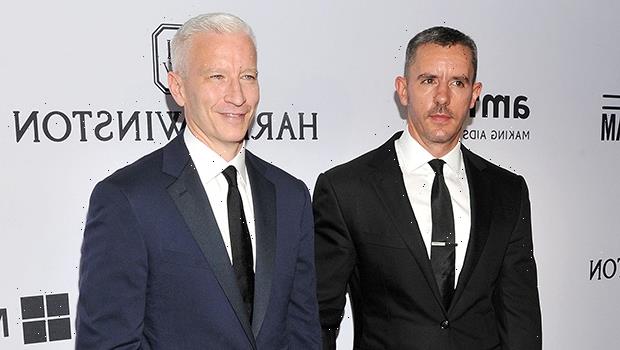For such a small and lightly populated region, the Nordics have been delivering an impressive number of critical darlings from a wide range of filmmakers. Nordic features hit a milestone this year, with three Cannes prize-winning films, Valdimar Jóhannsson’s “Lamb,” Juho Kuosmanen’s “Compartment No. 6” and Joachim Trier’s “The Worst Person in the World,” along with Jonas Poher Rasmussen’s documentary “Flee,” among the 15 on the Oscar shortlist, with the last two getting multiple noms.
Sundance also hosted a record number of Nordic movies, such as Alli Haapasalo’s “Girl Picture,” which picked up the Audience Award in the World Dramatic section, while more pics are in the pipeline at the Berlinale.
For decades, Sweden, Denmark and, to a lesser extent, Norway, were considered the top purveyors of internationally successful movies with helmers including Lars von Trier, Thomas Vinterberg, Susanne Bier, Roy Andersson, Trier and Ruben Ostlund, taking prizes and other trophies from festivals and awards bodies. But in the past few years, a raft of filmmakers have emerged in Iceland and Finland with fresh voices, bold ideas and technical skills.
“Seeing Nordic filmmakers like Ruben Ostlund and Joachim Trier have their films compete at major festivals and win prestigious awards has inspired a new generation of talents to aim higher, and we can see this ambition reflected in the casting, production value and artistic vision of their movies,” says Theo Tsappos, head of festivals at the Swedish Film Institute.
Although they’re grouped together as a region, all the countries have their own distinct cultures, and their most successful movies often stand out for their originality coupled with a strong local flavor.
In an era when audiences are bombarded with content on every screen, these films provide people with a glimpse into something or somewhere different. Rising filmmakers, for instance Jóhannsson with “Lamb,” or Hanna Bergholm with her Sundance-premiering “Hatching,” weave drama and genre elements borrowing from folktales and mythical stories from Iceland and Finland, respectively.
“When you make a film you have to be true to your roots because if you make something that you’re passionate about, that you want to see, then other people will often be interested,” says Jóhannsson, who was developing “Lamb” for 10 years with the Icelandic poet Sjón while working as a crew member and stuntman.
The rookie helmer faced a lot of rejection when pitching the project but stuck to his vision.
Daniel Kuitunen, whose Helsinki-based banner Komeetta is producing J.P. Valkeapaa’s “Hit Big” and Bergholm’s next movie, says “those centuries-old folktales touch on something primal, they tap into our fears, into the men vs. nature conflict, and provide a rich storytelling material.”
He points out that Nordic films often have sounds and images tell the story more than dialogue.
Jóhannsson says on “Lamb,” the idea was to have “as little dialogue as possible” and work on the sound. “Sound is one of the most important things in film, it can be mesmerizing and pull audiences in.”
Back in Norway, Trier has also been aiming for authenticity with his Oslo Trilogy, which began with “Reprise” in 2006, continued with “Oslo, August 31st” in 2011 and culminated with the romantic drama “The Worst Person in the World.”
“The light is very special in Oslo and northern Scandinavia … I love that sense of specificity of a place in movies,” he says. “For a filmmaker, it’s a cinematic gift to have a place that you know intimately, that you can film and show to an audience. Oslo is exactly this to me. Making films for me is about memory, spaces and time.”
Another common denominator among these critically acclaimed Scandinavian films is their sophisticated visual style. Many filmmakers storyboard their project, no matter if they’re making a genre film or a drama, and don’t shy away from visual effects.
Subsidies from national film boards in Sweden, Norway, Finland, Iceland and Denmark, as well as regional funds including Film i Väst, have played a key role in bolstering local helmers, and these orgs often join forces to back ambitious or daring movies.
Tsappos says almost all Nordic films that play at festivals have at least two Scandinavian countries involved in the financing. When it comes to Swedish films, 70% are backed by at least one more Nordic country. International co-productions with non-Scandinavian partners are also becoming more common and have allowed filmmakers to access a wider pool of resources.
“Lamb,” for instance, received funding from both Iceland and Sweden, as well as Poland.
In some cases, film institutes are not only backing projects but also talent, acting as mentors. For instance in Denmark, a program was recently launched to help promising new filmmakers who have just graduated develop their first projects.
“Scandinavian films have a certain candor, a clarity and originality,” says Annika Sucksdorff, the head of production at SF Studios, whose upcoming films include director Bjorn Runge’s romance drama “Burn All My Letters.” “The financing system has been quite brave in giving opportunities to talent, and even pretty weird projects get financed and succeed, which has been encouraging.” Sucksdorff will be joining Netflix in April.
Aside from these traditional sources of financing, several soft money schemes and private investors have emerged in recent years, especially in Finland. Among them are Aurora Studios, a financing and distribution company launched by Ari Tolppanen, the founder of the private equity group CapMan; and Business Finland, a Finnish promotion org that has launched an incentive with an annual budget around €10 million ($11.4 million) for movies shooting in Finland.
“We have accelerated for the international growth of our film and TV sector. Local production companies have seen their annual revenue skyrocket by 43% between 2016 and 2019 and we know it’s even higher today,” says Hanna Vuorinen, head of audiovisual production promotion at Business Finland.
She notes that Finland has also produced a raft of successful female directors, three of whom had their movies world premiere at Sundance: Haapasalo, Bergholm and Zaida Bergroth, the helmer of “Tove.”
“People are surprised to see so many female directors coming out of Finland but it’s not a coincidence. It reflects the fact that Finland ranks as the country with the most political and civil freedom,” says Vuorinen.
Now that local streamers such as Viaplay, CMore and Elisa, and global services like HBO Europe and Netflix, are starting to invest more into movies along with series, this upward trend should continue in the years to come.
“We feel that we have already consumed all the U.S. content out there and the world is now more open to see more peculiar stories not yet told from other countries and regions, and we’re ready to build on this momentum,” adds Vuorinen.
Source: Read Full Article


